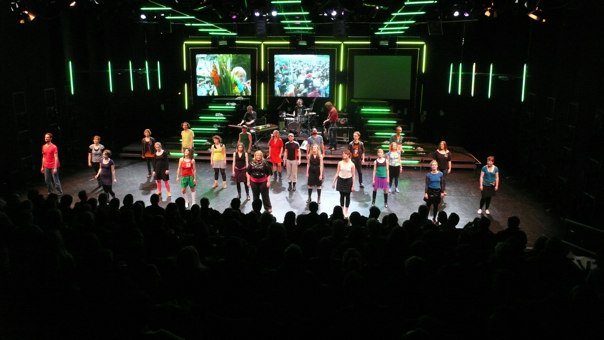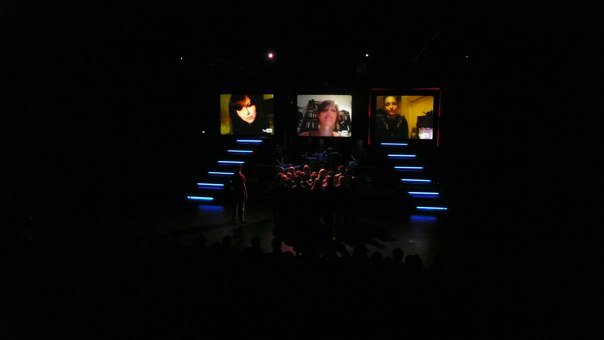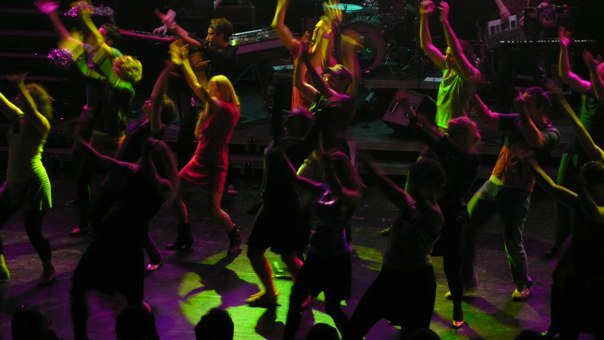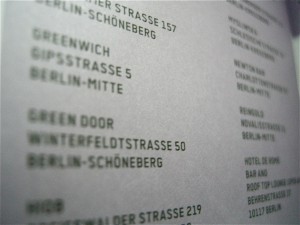With the subtitle “Art Market Event as Mass Choreography”
Monologue of performance artist, choreographer, writer and thinker Mårten Spångberg, curated by Egle Obcarskaite.
PRELUDE
It was a divine weekend of textbook “art world glamour” that embraced Berlin at the beginning of May. Berlin Gallery Weekend was the name of the event, and it was all about performing encounters that counted. Yet another in the long line of ever-repeating scripts of this kind of action.
Shall we talk about art at this point? Totally–art of meeting, art of making it to the more or less exclusive parties, art of endless gin and vodka tonics. At the risk of triviality, it got me thinking about objects and relations labeled as “art,” where this object and these relations shift their center of interest from art’s content to its performativity, where the latter actually BECOMES a material substance through it’s manifestation in the necessarily RIGHT way.
Why not a mass choreography? Bodies performing the same set of rituals over and over again. The behavior is the same: to look as if you belong here, to hold a glass of champagne in one hand and a black Moleskin notebook in the other. And to move: move smiling, move tired, move drunk, and move horny. And yet most of the actors in the art world talk about art, rather than thematizing being-in-the-art-world here and now.
The fascinating thing to me is that what became the greatest art object here was nothing more than a map. A labeled, categorized, and indexical map of ideal, must-see objects. The beauty of it, however, lay in the fact that it was actually a map that pointed more to what you’d be unable to see. It was one rather powerful map — presence or non-presence in it became the main criterion for the aesthetic, conceptual, and market value of the actors within the field.
One could see other sub-maps, alternative maps being produced, all with the same hope to be placed within THE ONE AND ONLY. Well, actors wishing to place themselves on it did not have much to lose anyway. Even if the climax was too far away to be reached, at least they had a chance to throw a good party on the occasion. And dance, dance. Or simply get bombed.
The art market event is a mass choreography, I thought again, and invited a choreographer to brainstorm on this idea in, as I thought it would be, an improvisational monologue.
Mårten Spångberg, together with his collaborator Tor Lindstrand (under the collective International Festival), has had his fair share of the art market world, choreographing his way around art fairs just as he does in his own pieces. Here I don’t give you the bullshit of establishing a dialogue — I cannot imagine an explicitly articulated dialogue happening between Spångberg and me. But when it comes to it, I love performing the obliged listener. And I naively believe it was a win-win situation. I got an established name to talk on the subject I was interested in, while he got yet another platform to promote his work. So we talked. This time in Stockholm, on the 22nd of May 2010.
Mårten, what is your take on an art market event as a mass choreography? Can you draw some parallels between these two processes?
(a couple of minutes of intense and very intense thinking… here it goes)
One can divide the history of museum into three episodes. The museum is an early 19th century phenomenon. The Louvre is more or less the first museum which coincides with the introduction of bourgeois culture, industrialization, cities becoming bigger, opportunities for movement and information flows becoming more efficient. I believe the museum in this form was about celebrating the monarchy and the state to a large extent. The second episode of the museum is rather the one that comes a hundred years later, developing from 1900 on. Differentiations of the object in the museum was no longer celebrating the state, but rather the industrial society. Whereas, in the first phase, representation was central, in the second phase what is central to a museum is objects. The object becomes even more important after World War II. This object becomes more and more related to, or coinciding with, an industrial object. And today there is — or has to begin — a development of a third phase of the museum.
[One can think this phase in parallel to production development.] If the first phase is related to the production of the modern state, the second to the production and manufacturing of objects, certain notions of expansion and goods, the third phase can be localized through the terms of geopolitics or bio-politics, from Fordism to post-Fordism, from material labor to immaterial labor, from society based on products, to the one based on knowledge. In this case, if our society is essentially organized around immateriality or bios in the sense of life, it would be logical that the museum and what is on display becomes something else. It has already happened, although I don’t think it has been really acknowledged. What is important today is not what you see on the walls, but the people in the museum. The museum has also become a place of immateriality.
[So…] The object was important before and the people not exactly. Of course you had to have an audience. But today it has turned around. The objects on the walls are an excuse for having people around. In practices like relational aesthetics or in the practice that Tor [Lindstrand] and me are doing with the International Festival, it’s all about producing setting designs, devices, generators, machinic assemblage–concepts basically, for different kinds of interaction. Also with objects, but usually with an object that informs via relations or with other people. The museum has turned into a performance space, a place where objects are gone and where knowledge and information are everything. Practices that we will see in art in the future will not include objects in the ways that we think about them today. I don’t know how this would look, but I am convinced that the future of the museum is not objects but particularities of relationships. Which might not at all be tangible or hard.
So what do you do as a curator? It doesn’t matter what it is that you show. The artwork in your exhibition doesn’t matter. What’s important is how you make people move. Therefore, a curator today is a choreographer. We say that Jackson Pollock was the first performance artist. It doesn’t matter any more what is in painting; there is no centre, no motif. There is no particular skill to make it. It’s the movement and not what the movement produces that matters. I think that we have now the second Pollock fascination, where it doesn’t matter what a curator shows, but how they make people move. That’s how you signature yourself as a curator. I understand performance as expression, where the protocol, the script always exists, but is of less importance than that which is available in the space, which we can also understand from the performances in the sixties, happenings with Kaprow and so on. There is expressivity, disappearance, ephemerality, and all of these things are very important. And I think choreography is a related federation, where the scores, and protocols, procedures and organizations are what is central. So I think that the curator is not going to become a performance artist, but rather a choreographer – the one who organizes movement.
The art fairs [or gallery weekends] are peculiar situations. Of course there are performative paradigms, but it is more – who the fuck cares what is on the walls or what’s in the gallery, it’s all about the frontage – standing around, drinking the right wine, talking to the right people, so of course to make an artist career, or a curator career, or a gallerist career it’s all about one’s choreography. Choreographing the way in to the right people, out to the right people. But you can never want to get in. That’s the worst sin that you can do, to want to get in. You always have to sort of act as you want to do less. As the artist or a curator. Especially as the artist. You cannot want something.
So, you are choreographing your career, obviously. And successful ones are the ones who get this before they start to make art. First, you start a career, then you decide what art to make. Again, it is immateriality. Nobody is an artist because of what they do, they are the artists because of how they have choreographed their careers. So the museum has become choreography, the careers have become choreography, the art fairs are just another backdrop for this choreographing thing. And there we have a little bit of a different situation, where there are protagonists and the corps de ballet – in art fairs, they are the ones that gallerists talk to. They are the ones who are invited to the dinners, the ones standing around in the Kunsthalle bar in Basel or whatever. And then there is the corps de ballet: all these people that think that art fairs are interesting. They think that they would look at some art, and then they perform this eternal “too slow to see anything and too fast to have any fun” pace around. And then they stand around and drink champagne or whatever. There is also choreography there.
But there a problem occurs. You don’t want to make a mass choreography, but you don’t want to make solo pieces either. That’s the business. We don’t want to make mass choreography, because we hate it when we are in Tate Modern and there are 6,000 people on a Saturday. 10,000-15,000 people on a busy Saturday in spring. We say to each other, it is impossible to see… As artists, connoisseurs, people who participate in the market, we have a tendency to say that it is terrible to go to Tate Modern on Saturday when there are so many people there. So we don’t want a museum to be a mass choreography. But then I say: pack in as any people as possible — it’s fucking great to see these 15,000 on a Saturday. And whatever, people aren’t there to look at art anyway. How could you be so stupid to think that they are there for the art? They are there for the experience. It doesn’t matter if it’s full, as long as they have coffee, café latte, and ice cream.
But at the same time you don’t want solo pieces, because you also get upset. [We think it is a shame when good exhibitions in the Municipality of Whatever have so few visitors.] So we don’t want to be empty and we don’t want it to be full. It should be just enough. You know, PROPER. Not too much and not too little. It is totally silly. We should stop making group pieces, in that sense… If we understand the museum as the place which is not about the objects, but about experience, about performance, about choreographing experience, etc., then we also have to rethink conventional binaries among artist-institution, artist-curator, audience, beholder-producer, recipient, etc.
Thanks, but I still cannot get over losing the object. Wait a minute, isn’t the market concerned with materiality as selling objects? And look at you. You go to art fairs, but you admit that you don’t sell anything…
You don’t have to choreograph people to buy something – they will buy it anyway. What we do it is much smarter. If we were interested in selling art, then we would make art that sells well. We would at least think of a form that makes it sellable.
Paintings…
For example. Things that are in a certain size or that have certain motifs. But we are not that kind of artist. So why should we try when we know that we will not sell particularly much? And if we’d want to sell at an art fair, we would try to establish a relationship with you and try to sell you something, and we would establish another relationship with another person whom we would try to sell something else. I don’t think that this is good for us nor for anybody else. When we make a bar instead, then we speak with an enourmous amount of people across all kinds of economic boarders. We speak as much with someone who is 16 years old and is interested in becoming a painter and also to a mother nursing her child. We are not interested in shopping and consuming in the sense of the object, but rather in a sense of information. In our booth, real consumption happens, instead of just one or a bunch of curators consuming. What we are doing is not necessarily ideological. We are interested in particular efficiency in respect to our practice in the industry. We can call it a rejection of the object, but it is not that important for us.
I find it very weird. There is a young artist who goes to study at the academy and is making radical art. And then there is a curator coming around, invited by the director of the school to look at the artist and how great he is, and then they make a little show. Then he gets a gallerist and the gallerist shows the artist at art fairs. So the artist is still 26 years old, his gallerist is 43 years old at least, and the customer is how old?
60?
… at least. So the radical young artist is making art that tries to propose some kind of political agenda or transformation in society, and he sells it to people that most of all represent everything else – bourgeois culture, collection, property, buildings. It’s a very inefficient model. Whereas when we make art in art fairs, then the most happy people are the ones who are less than eight years old. We make art for the future of collecting art. While daddy is standing in another booth and buying a painting, his kids are in our booth throwing confetti on each other. So who’s gonna be the best in years? Dad is gonna be dead, the artist is gonna be over, as we will have a gang of beautiful young collectors that started their art experiences with a sort of communism of art. It’s a very stupid gesture that we promote in art fairs. All other art in the art fair is there to be looked upon at best and then consumed [taken away] by an individual. The reason we want to have art fairs is that we want others to see what we buy. You should borrow the piece that you buy, offer this to a general audience a little bit in advance in order to increase its value. I never thought about this before, but I think what we are proposing is a sort of communism of experience, in the sense that – hello, if you’re eight years old and you want a bag of confetti to take with you, of course you get one!
You create experience. But you would sell the project after. It anyway ends up with an object at some point…
This is an evidence of an old school of what economy is and can be. There is a shop next to where I live called Urban Deli. It is mixed: a shop, a bar and cafe, and food, etc. It is quite exclusive–yet not the most expensive and exclusive thing you can get. It’s not Gucci or whatever, but it’s really high quality. There is no divide between the bar and the shop. If you buy a glass of wine, you can also go to the shop and buy potato crisps to have together with it. Basically, you can go shopping there and have a picnic. But the mystical thing with this place is that somehow the conversation at the table is the same as the conversation behind the bar. The conversation at the cashier register is the same as on the other side of the bar where the two guys are talking about whatever they are talking about. You have this intention that when somebody pays you have this, why do they pay? It looks like everybody works here and everybody is at the same time a customer here, both a maintainer and an extra. So every time you pay in this place, you feel that there is no need to do it. This is only a sign, as a kind of nostalgic gesture. In the Western world economy there is something happening less and less related to objects and more simply by circulation. We circulate economy, and that makes economy. So we don’t really have to buy artworks anymore. We can just borrow them, hand them out. As long as they get passed around, it’s gonna be fine.
Am I wrong interpreting it as a sort of simulation, simulacrum experience?
But a good one, positive one. It’s a double simulacrum. We have to stop thinking that there is anything authentic to maintain. We have to skip thinking of capitalism as being the only system having economy. We should think about simulacrum as an experiment instead of as a danger. I am rather interested in more simulacra than assumed danger of it. We live in a society where the only way to make sure that the crisis won’t happen again is to stop fighting against it. We have to start negotiating quality in a much more complex manner, which also includes work. What we know about ecology is that if we only try to slow down or suspend the catastrophe nothing better is going to happen because we don’t take flight anymore. What’s the value of suspending the crisis or the catastrophe? For 20 or 30 or 50 or 150 years? Apparently we don’t want to change, we don’t want to be anything else than suspensed. Otherwise we would have stopped. Now we have to produce new values for what the world will be when the oil is over or whatever it is that is going to be over or the salmon disappear. Of course there are many people who are happy about catastrophes and who make money out of it. Shit loads of money. SO, if I understand Baudrillard correctly, he says that at the certain moment simulation will take over and become the world. And then the man will be completely manipulated down to the core. I think this is incorrect, because it means that man is not developing in a correct connection to image production. I’m interested in speeding it up: we are already manipulated, so let’s simulate more, produce more simulacra. Something has to happen and something will happen. Some other motif can emerge…
Immateriality is also in a way simulacrum.
Yes, totally.
And you really think people can overcome binaries and free their minds from the mastery of the object?
I think it has changed very much since 2008. I’m not interested in people. I’m interested in you and me and the ones who want to perform something. SO we can lie down and die and say art is over, critique is over, ideology is over. But we can also start developing other practices. And read books and more books. And insist on making work that operates through concepts in the basic sense rather than through political agenda or ideological representation. SO I see the importance of re-readinng A Thousand Plateaus right now. And then reading it backwards. The body without organs that they [Deleuze & Guattari] propose is not the body without organs that we can propose anymore, although A Thousand Plateaus functions as a manual for transformations. It’s interesting to think that today a decent company has a body without organs as one of its models of organization. Any kind of business organization today is thinking of itself as rhizomatic rather than a tree of knowledge. I like that Brian Massumi in his text called Fear talks about how the Bush administration has efficiently exchanged information in respect of the suspense of the argument in favor for the production affect. SO, politics does not want to be readable but wants to maintain itself as affective or unreadable. As long as we keep our community in fear, they will not complain about what politics we produce, as long as we survive. And then Massumi says the problem with our society today is that there is no other strategy to work through.
SO, even if we dislike whatever we think about the Bush administration, despite what we think about fear, if we want to produce change, the only way to produce it is again with the same mode of production. But then instead of producing fear, what interests me is how one can organize work in ways where affect becomes activational for the differentiation of the possibility of thought in respect of OK, if the ideology that we are familiar with has lost its potentiality, then we don’t say that we are in the post-ideological society necessarily; then how could we produce, through what means can we organize the possibility for differentiation? And this must happen through emergence. And this is scary because we don’t know what is going to come out. But it is the only way to do it. And there is a kind of tragic and sad and boring with cultural world today in the West today. And that is the sensation that the cultural policy producers — art councils or what have we, refuse to acknowledge the importance or necessity of collateral damage. SO, the cultural policy makers of the state want to find new financial systems and tell us to work with new corporate systems. But they also want us to make art production contemporary and efficient. And refuse to have any collateral damage. However, if we operate in the way we do now, in the way of transformation without victims, that means the whole scene will be poorer and poorer, and more equalized, and thin as water. And after a while it will loose its vitality.
How do you exactly incorporate the idea of immaterial labor in your work as a choreographer?
The very definition of it is about the knowledge exchange in production. I do not make work on people as if they were objects. Once I came across this text by someone whose name I do not remember now, where it was explained that on the one side there is only immaterial labor, and on the other side there has never been immaterial labor, i.e. that does not have a relationship to an object or physicality sooner or later. SO immaterial labor is rather an activity that doesn’t produce tangibility or an object in the conventional sense. But then of course a piece of information is also an object. A piece of argument can also be an object, and we can reproduce it in all different kinds of ways. But if the activity is the object, then what I do as a choreographer, is immaterial labor. One can say that a choreographer like Balanchine or Mats Ek, or Anne Teresa De Keersmaeker to an extent, or Jirí Kylián totally, these people can be understood differently as immaterial labor in respect to choreography, in the sense that they always handle other people, and they do it first by making a choreography and then telling other people what to do. But the dance performance is a bit of a complex object. It’s basically the title that is in a program book of a festival that is then a very weak object but which gives evidence to another object, which is the experience of being there somehow. In a program book, performance is an object that exists in a very tangible manner. And in a show it is much weaker although it is standing right in front of you. In her book, The Ontology of Performance, Peggy Phelan writes that the specificity of performance is that it disappears in and through its own becoming. And therefore it is by definition a critique of reproductive economies such as capitalism. She also writes that performance is unrepeatable. And what is on the video tape of the performance is not a performance but a performance on a video tape. That’s also the same thing if you go to the museum and you look at paintings. The next time you come back, the painting you saw before is already another painting because you came with another guy. Painting is different because maybe your mother has been there and also engaged in it. Concert with a rock band or a symphony orchestra is the same disappearing experience. So it doesn’t work to describe performance like this and it doesn’t make it critical. From one side, as a choreographer I only work with immaterial labor. But procedures and activities of it are very material.
Immaterial labor is what the whole neo-liberal system is based upon. And what it wants. So we have to be careful about how we speak about immaterial labor and whom we assign to be immaterial labor. People who are answering the telephone and saying “Deutsche Telecom how can I help you?” — many of these people are badly paid Indians, and not performance artists. SO currently I am developing few projects in relation to my institution, where we are interested in thinking about choreography in an expanded sense. Choreography is not mere a toolbox for making dance. Even though many people think that this is exactly what it is. But I want to think of choreography as a set of instruments, analytical and productive, for the production of anything, of whatever. You can apply it in the same sense as you can architect not only houses, but orgazinations, relationships and anything. This is a way of sort of thinking if the world, if our environment is turning towards more immateriality, then we don’t need architects anymore, or designers of machines and objects. What we need now is more choreographers who are becoming specialists on how flows are happening, and how movements are taking place. Human movements, and also movements of values and economy. It is complicated for us because there is no literature around it basically. And we are not interested in producing more definitions capturing what choreography could be, but rather the contrary. But I’m a very positive and happy and have a good instinct about the future. I have been thinking throughout my career that it occurs that I am ending up being a sort of performance artist-choreographer, and dancing on top of everything, instead of being a visual artist. In the begining I was very sad about this, but could not make myself leave. And today I think the other way around. Thinking, Goddamn, I am so happy that I am a performance-related artist and not an artist who formulates his practice around object-making. A visual artist is someone who is still hooked on objects trying to become a performance artist. And I am already a choreographer, I don’t need any objects whatsoever. Well I need them sometimes, in order to make people believe I am as conventional as I say, which is also imporatnt in terms that if we are interested in choreography and movement, their coming into being and so on, then our motivation in respect of the object becomes much less entangled to aesthetic decisions. So in the International Festival practice any chair that is cheap and not very stable is a good one. We don’t have to argue about the particular color or anything. The aesthetic arguments are in modes of production and in modes of activation rather than in modes of representation and appearance, which I think is just fine.























